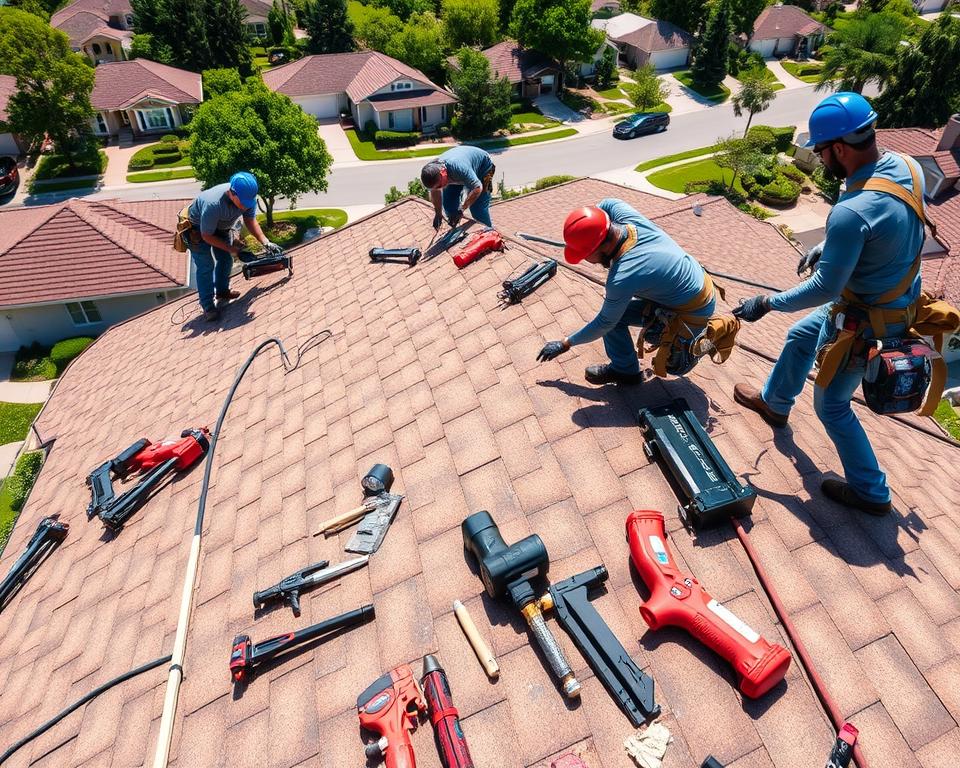Specialized Commercial Land Clearing Solutions throughout Texas
Can you believe that over 20 million acres of forestland have been opened up for industrial development in Texas in the last decade? This remarkable statistic shows the huge demand for specialized commercial land clearing services. Businesses are broadening rapidly, and precision and safety are key. Hiring a experienced land clearing provider goes beyond advantageous; it is essential for addressing the complexities of land clearing services.
Be it for development, utilities build-out, or land management, comprehending commercial land clearing is vital. Expert solutions are engineered to meet the particular needs of commercial properties. They guarantee compliance with regulations and deliver high-quality results. As we explore efficient land clearing in Texas, you’ll see how expert solutions are crucial for environmental preservation and commercial growth.
Core Lessons
- In excess of 20 million acres cleared for business use in Texas in the past decade.
- Hiring professional land clearing solutions is essential for protection and compliance.
- Commercial land clearing is critical for successful project outcomes.
- Skilled land clearing assists protect environmental integrity.
- Tailored services available to meet distinct commercial property needs.
Comprehending Commercial Land Clearing
Commercial land clearing is a essential step in preparing land for development projects. It entails removing trees, brush, and debris to guarantee a safe zone for construction. This method matters most for readying the land for building and reducing environmental risks. Efficient site preparation is key to the longevity and safety of structures built on cleared land.
Definition and Significance
Commercial land clearing includes various crucial steps to create a clean space for builders and developers. It removes obstacles like thick vegetation and debris, reducing construction hazards. This process shortens construction timeframes and improves safety. Maintaining ecological integrity during this phase is critical for sustainable development.

Common Applications in Texas
Across Texas, commercial land clearing addresses diverse needs across industries. Common applications include:
- Location preparation for commercial buildings
- Infrastructure development, including transport routes and utilities
- Agricultural land clearing for crop production
- Utility installation to improve public services
Firms like 5K Land Management and Steelhead Services deliver specialized approaches for different projects. Their expertise ensures land clearing is efficient, smooth, and appropriate for Texas’s dynamic landscape.
Advantages of Choosing Professional Land Clearing Services
Selecting a expert land clearing service provides numerous perks, ensuring both efficiency and quality. Experts contribute their knowledge and resources to the table, significantly improving land clearing outcomes. This insight can help you in making decisions that meet your project’s objectives.
Benefits of Hiring Experts
Professional land clearing exceeds just clearing debris. Skilled teams employ advanced equipment and techniques customized for diverse terrains. Providers like King’s Land Clearing design bespoke plans that ensure prompt completion and safety. The benefits include:
- Expert Knowledge: Trained professionals have a deep understanding of land clearing methods.
- Advanced Equipment: Access to innovative machinery speeds up the clearing process.
- Safety Compliance: Adherence to safety protocols lowers the risk of on-site accidents.
- Time Management: Quick project turnaround allows for faster advancement to subsequent phases.
Cost-Effectiveness
Although cost-effective land clearing solutions may appear more costly initially, the long-term savings are considerable. Swift completion reduces downtime, and expertise avoids costly mistakes. By engaging professionals, you can achieve:
- Reduced Risk: Avoid unforeseen expenses associated with accidents or inefficiencies.
- Streamlined Processes: Experts ensure a smoother workflow that prevents delays.
- Higher Quality Work: A professional finish leads to improved satisfaction and potential cost savings in project modifications.
Our Thorough Commercial Land Clearing Process
Understanding the land clearing process is crucial for successful commercial projects. We adopt a methodical approach tailored to each site’s distinct needs. Our process includes preliminary property assessment, advanced equipment use, and comprehensive debris removal. These steps ensure effective site preparation.
Initial Property Assessment
The foundation of our land clearing process starts with a detailed property assessment. This evaluation helps us identify various land conditions and obstacles. With this analysis, we can develop a customized clearing strategy that addresses the specific requirements of each project efficiently.
Machinery and Methods Used
Efficiency is our focus in land clearing. We use heavy-duty machinery and advanced mulching methods to clear vegetation swiftly. This approach safeguards the environment. Specialized mulching equipment converts brush and timber into chipped mulch. This method reduces the need for burning or extensive debris disposal, aligning with sustainable practices.
Cleanup and Site Preparation
After clearing the land, debris removal matters most for site preparation. Our team thoroughly cleans the area, ensuring it’s graded and ready for construction. This preparation secures the new development site meets essential safety and functionality requirements.
Expertise of Our Team
The outcome of commercial land clearing projects heavily depends on the team’s proficiency. Our professionals are experienced in the complexities of land clearing. They ensure every project adheres to industry standards and client expectations.
Credentials and Experience
Experienced land clearing contractors bring invaluable knowledge. Our team understands regional regulations and industry best practices. This knowledge matters most to ensuring compliance and excellence in every clearing process.
From operating advanced equipment to considering environmental factors, our team’s skills enhance efficiency and project outcomes. Their expertise is vital for successful land clearing projects.
Adherence to Safety Protocols
Safety remains our highest priority. We follow stringent safety protocols to lower risks in land clearing. Our team undergoes continuous training and certification in the latest safety standards.
This commitment safeguards our team members and protects the environment. It ensures sustainable practices throughout the project lifecycle.
Varieties of Commercial Land Clearing Solutions Offered
Comprehending the different categories of land clearing solutions is essential for effective site management. In Texas, businesses need specialized solutions to ensure their projects run smoothly and meet regulations. The various categories of land clearing services meet diverse project needs.
Right of Way Clearing
Right of way clearing is about creating and preserving paths for utilities, transportation, and communication lines. It’s vital for infrastructure development in Texas. This service keeps areas clear and safe, while protecting the environment.
Forestry Mulching and Brush Clearing
Woodland mulching and brush clearing turn vegetation into mulch, minimizing ecosystem disruption. These services prepare the land and offer ground cover. They enhance soil health and local wildlife habitats.
Ground Leveling and Preparation
Ground leveling is essential for stable construction foundations. It makes the land level and ready for construction, preventing future drainage problems. Proper grading ensures the land can support the weight and infrastructure of new buildings.
Perks of Choosing Our Commercial Land Clearing Company
Opting for the ideal partner for commercial land clearing matters most for project success. Our services offer productivity, eco-friendly practices, and affordable solutions. These are tailored to meet the unique needs of our clients.
Efficiency and Speed
Our team utilizes advanced equipment and expert professionals for streamlined land clearing. This approach enables us to complete projects quickly, lowering preparation time. Speedier project completion means your development can move forward without delay, making it a priority.
Eco-Friendly Practices
We focus on sustainable methods in our work. Techniques like mulching enhance soil health and cut waste. These practices meet modern environmental standards, showing our dedication to natural resource preservation.
Cost-Effective Services Tailored to Your Needs
We recognize budget constraints are common among clients. That’s why we offer affordable land clearing services with flexible pricing. Our extensive array of services ensures clients get great value for their money, delivering high-quality, cost-effective solutions.
Commercial Land Clearing Costs
Comprehending commercial land clearing costs is essential for businesses looking to develop property. Several critical factors affect these costs. Knowing them helps in effective budgeting for land clearing. The size of the land and the complexity of the terrain are significant factors in the final price.
Factors Influencing Land Clearing Costs
Several factors contribute to the overall expenses of commercial land clearing. These include:
- Lot size
- Terrain complexity
- Species and concentration of vegetation
- Particular project needs or constraints
Firms assess these variables to deliver detailed quotes. It’s important for clients to understand that a more complex project may lead to higher costs. This is due to the need for additional labor and equipment for efficient clearing.
Employing a Cost Estimator for Budgeting
Employing a cost estimator can significantly help in budgeting for land clearing. This tool allows clients to input specific project details and anticipate expenses more precisely. By getting estimates, clients can better understand their financial obligations. This enables them to make more informed decisions for their development plans.
Customer Testimonials and Success Stories
Our commercial land clearing services have demonstrated effective results through past achievements. Client testimonials and success stories showcase our team’s capabilities. They highlight project timelines and the quality of service we offer.
Success Cases of Past Projects
Every successful project demonstrates our team’s expertise and dedication. For example, we cleared a demanding site for a new retail center. We finished on time, enabling our client to start construction without delay. These stories illustrate our ability to meet varied needs with high quality.
Customer Feedback on Our Services
Praiseful feedback from customers underscores our commitment to excellence. Many have praised our efficiency and professionalism. This feedback builds trust with those seeking trustworthy land clearing services. It evidently shows our dedication to quality has earned us a solid reputation.
Geographical Coverage in Texas
Grasping the geographical territory of commercial land clearing in Texas matters most. It helps connect clients with the right services. We offer extensive coverage across the state. This ensures businesses in various regions can access our quality offerings.
Regions We Serve Across Texas
Our services span a broad range of regions, from bustling urban centers to peaceful rural locales. This reach enables us to meet the diverse land clearing needs of clients. Whether in Houston, Dallas, Austin, or smaller towns, our commitment to excellence stands out.
Local Insights on Commercial Land Clearing Needs
Understanding the distinct characteristics of different Texas regions is crucial. Factors like soil type, vegetation, and local regulations shape our approach. Our local expertise ensures clients get tailored solutions that respect natural attributes while successfully preparing the area for development.
Significance of an Green Approach in Land Clearing
The move towards eco-friendly land clearing is driven by the critical need to tackle environmental issues. Adopting sustainable practices not only aids in effective land management but also safeguards local ecosystems. It’s vital to grasp the methods and their effects for responsible land clearing.
Techniques for Sustainable Practices
Techniques like mulching and selective clearing greatly lessen environmental harm. These methods promote plant growth, boost soil quality, and uphold biodiversity. By embracing eco-friendly land clearing, developers can foster a greener environment while meeting their project objectives.
Impact on Local Ecosystems
Land clearing strategies that protect wildlife habitats and biodiversity matter most. Comprehending the ecological effects is crucial for operations that protect the environment. It’s essential to balance development with nature to avoid degradation and ensure sustainable land use.
Wrapping It Up
The need of professional commercial land clearing services in Texas is undeniable. This article has shown that hiring experts leads to effective and safe project execution, while ensuring a commitment to environmentally responsible practices. Clients looking to close out commercial land clearing projects will greatly benefit from the expertise of seasoned professionals.
Opting for a reputable land clearing company means all steps—from initial property assessment to debris removal and site preparation—are handled with precision. This summary highlights that investing in professional services complies with regulatory standards and boosts the success of future developments.
When planning your projects, remember the many benefits of working with a expert land clearing service provider. Their skills and resources ensure your project is wrapped up on time, within budget, and with lowered environmental impact.









